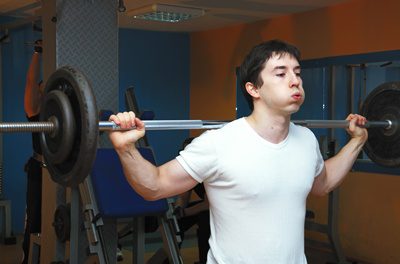The fitness industry is growing like crazy across the world. Current estimates put annual sales in the multi billion dollar range, with projected dollars into the multi trillion dollar range within the next decade. This makes sense, as the fitness industry will inversely correlate to the health of the nation. As the nation's health declines, more and more people look to improve their health, and the easiest way to do that is to exercise and eat right. The downside is that more people are eating at MacDonald's than at Whole Foods or Planet Organic, and sit for 90% of their day, with their only activity being getting up to move to their new place of sitting.
Weight loss makes up a large (pardon the pun) segment of the fitness industry, as most people are looking to lose weight. There are a lot of estimates that say if every overweight person in North America were to lose just 5 pounds, it would save the national health care system more than $18 billion dollars annually. So since weight loss is such a big concern, and more and more doctors are prescribing exercise programs for their patients. Since most trainers are becoming considered a valuable component of the health care system, while not directly recognized, we should be able to make the type of income that is similar to the other professionals in this field. Unfortunately, most are barely able to make an average level of income because they are refusing to capitalize on developing their drawing power with this population.
In addition to a population that has dwindling health and expanding waist lines, the population also has a bunch of nagging injuries, pain, and muscle imbalances that make working out difficult, if not extremely painful for them. This can easily discourage anyone from beginning or continuing with an exercise program, which will lead to drop out and further exacerbate the problem.
Having a trainer who understands how to make weight loss happen is great, but when a trainer has a client that needs weight loss, and also needs to strengthen an old knee injury, shoulder injury and reduce low back pain, that`s when we need to look at the specialists. A trainer with some knowledge of Post-Rehabilitation (training for injured clients who have been cleared to exercise by their doctor, physiotherapist, chiropractor, etc) can encapsulate a much larger percentage of the weight loss population that also has injuries and medical complications that an average trainer wouldn't be able to work with. By understanding the injury mechanics, dysfunctional movements and programming components that will help a client see progress even with limitations, we can help improve the health of the nation and become an integral part of the health care system.
I have had the opportunity to work with a lot of clients who had previously worked with other trainers, and once they work with me and we focus on their restrictions, they begin to see the value of having a trainer who understands these types of things. It`s pretty cool to be able to look at someone and tell them what parts of their body aren`t working properly and show them ways to fix it and have them feel instantly better, and then add in some specific conditioning exercises, corrective patterns and metabolic drills and watch them get stronger, leaner and in better shape than they have ever been!
As the population continue to age, and Baby Boomers near retirement and begin to look for new ways to stay active while taking into account their restrictions, the classical trainer who focuses on body composition and toning will eventually be homeless where the Post-Rehab trainer will have more clients than they know what to do with, and will be raking it in.
Learning about Post-Rehab isn`t easy. But then again, neither is weight loss. But those trainers that put in the effort are easily rewarded over those who look for the quick fix.
I teach an introductory Post-Rehab course that overviews the major musculoskeletal injuries a trainer would encounter in their daily adventures, as well as how they happen and programming considerations for each problem. The trainers who come out of this course typically use the information on themselves as Guinea pigs and start to feel better pretty quickly, and then they use it on their clients who start to think they are geniuses for fixing them.
In pretty much any person, a properly designed exercise program and a sound diet will help to eliminate pain, muscle imbalances, dysfunction, and help improve health, energy, strength and function. The fun part for trainers is knowing how to find that path that no one else could and help the client down that road.










